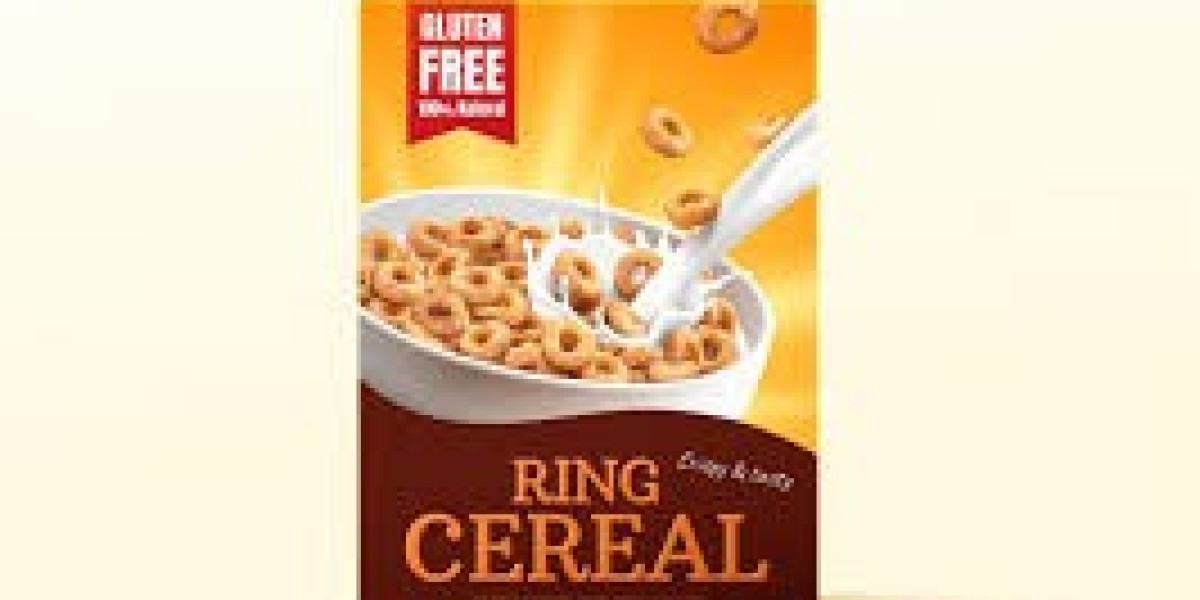Cereal boxes are an essential part of the food packaging industry. These boxes not only serve as a protective container for breakfast cereals but also play a crucial role in marketing and brand identity. The design, material, and sustainability of cereal boxes have evolved over the years, aligning with consumer preferences and environmental concerns. In this article, we will explore the significance of cereal boxes, the factors influencing their design, and the latest trends in packaging.
The Importance of Cereal Boxes
Cereal boxes are indispensable in the food industry for various reasons. Firstly, they provide a convenient, lightweight, and durable solution for packaging breakfast cereals. These boxes are easy to stack, store, and transport, ensuring that cereals reach consumers in optimal condition. The primary function of cereal boxes is to protect the contents from external elements like moisture, air, and contamination, which can affect the quality and freshness of the product.
Furthermore, cereal boxes help in maintaining portion control. Manufacturers often print the serving size and nutritional information on the box, providing consumers with the necessary details to make informed decisions. This helps in building consumer trust and promoting healthier eating habits.
From a branding perspective, cereal boxes are a critical marketing tool. A well-designed box can catch a shopper’s eye on store shelves and influence purchasing decisions. The box is the first point of contact between the consumer and the product, making it essential for manufacturers to invest in attractive, informative, and engaging designs.
Materials Used in Cereal Boxes
The choice of materials for cereal boxes is influenced by several factors, including cost, functionality, and environmental impact. Traditionally, most cereal boxes were made from paperboard, which is lightweight, cost-effective, and easy to print on. Paperboard is made from wood pulp and is highly customizable, allowing manufacturers to create boxes of various shapes, sizes, and designs.
However, with the growing emphasis on sustainability, many companies have started shifting towards eco-friendly materials. Recycled paperboard is gaining popularity due to its lower environmental footprint. This material helps reduce deforestation and minimizes waste. Some manufacturers are even experimenting with biodegradable and compostable materials to create more sustainable cereal boxes.
In addition to paperboard, some cereal boxes are lined with plastic or foil to offer extra protection against moisture and air. While this provides superior protection, it also increases the environmental impact. To address this, many cereal manufacturers are adopting recyclable plastic and incorporating environmentally friendly inks and adhesives in their packaging.
Design Elements of Cereal Boxes
The design of cereal boxes is crucial for capturing the attention of consumers and conveying important information. Several key design elements contribute to the success of a cereal box.
Graphics and Imagery
The use of vibrant colors, graphics, and images plays a vital role in making cereal boxes visually appealing. Bold, eye-catching designs help products stand out on crowded supermarket shelves. The imagery often reflects the essence of the cereal, whether it’s a wholesome, nutritious option or a fun, sugary treat for children.
For children’s cereals, characters, cartoons, or mascots are commonly used to create a playful and engaging look. This not only attracts young buyers but also appeals to parents looking for familiar and trusted brands.
Typography and Branding
Typography is another critical component of cereal box design. The font style and size must be easily readable, especially when the box is placed on a store shelf. The brand name is typically displayed prominently to help customers identify the product quickly. In addition to the brand name, cereal boxes often include catchy slogans or taglines that highlight the product’s unique selling points.
The branding on cereal boxes is essential for differentiating products in a competitive market. Logos, colors, and design elements associated with a brand are instantly recognizable and contribute to brand loyalty. As consumers become more familiar with a particular cereal brand, they are more likely to trust its products and return for repeat purchases.
Informational Content
Aside from aesthetics, cereal boxes also serve as a medium for communicating important information. Nutritional facts, ingredients, allergens, and health claims are clearly displayed on the box to inform consumers. With growing health-consciousness among consumers, providing transparent and accurate information has become a priority for cereal brands.
Some boxes also include additional features, such as recipe suggestions, fun facts, or educational content for children. These added elements enhance the consumer experience and create a connection between the brand and the customer.
Trends in Cereal Box Packaging
The design and functionality of cereal boxes continue to evolve in response to changing consumer demands and technological advancements. Here are some of the most notable trends shaping cereal box packaging today:
Sustainability and Eco-Friendly Packaging
As consumers become more environmentally conscious, there is increasing demand for sustainable cereal packaging. Brands are responding by incorporating recycled materials, biodegradable components, and recyclable inks. In some cases, cereal manufacturers are eliminating plastic liners entirely and opting for eco-friendly alternatives that still provide adequate protection.
The move towards sustainability extends to the reduction of waste as well. Some companies are designing cereal boxes with minimal packaging, using fewer materials to reduce the environmental impact. Additionally, brands are embracing circular packaging models, where the packaging can be reused, recycled, or composted, aligning with a more sustainable approach to consumption.
Interactive Packaging
With the rise of technology, cereal boxes are becoming more interactive. Some brands are integrating QR codes or augmented reality (AR) features into their packaging. By scanning a code with a smartphone, consumers can access digital content such as games, promotional offers, or cooking tutorials. This enhances the user experience and fosters a stronger connection between the consumer and the brand.
Interactive packaging also appeals to children, who may be more likely to engage with the product if there are digital experiences associated with it. It provides a new layer of entertainment and value, making cereal boxes more than just a container for food.
Minimalist Design
Minimalist design is gaining popularity in the packaging industry, and cereal boxes are no exception. Brands are moving away from overly complex designs and opting for simpler, more elegant packaging. This often involves using clean lines, subtle color palettes, and minimal text.
The minimalist approach not only appeals to consumers who prefer a more streamlined aesthetic but also helps emphasize key elements such as the product’s health benefits, ingredients, and brand identity. In a crowded market, less can sometimes be more, as consumers gravitate towards designs that are easy to understand and visually appealing.
Personalized Cereal Boxes
Another emerging trend in the cereal box market is personalization. Some brands are offering consumers the opportunity to customize their cereal boxes with their names or special messages. This creates a sense of ownership and makes the product feel more unique. Personalized packaging is also popular as a gift item, with individuals ordering customized boxes for birthdays, holidays, or special occasions.
Personalized cereal boxes allow brands to connect with their customers on a more personal level, which can enhance customer loyalty and satisfaction.
Conclusion
Cereal boxes play a vital role in the packaging and marketing of breakfast cereals. Beyond their primary function of protecting the contents, these boxes serve as a powerful marketing tool that influences purchasing decisions. The design and materials used in cereal boxes have evolved significantly, with sustainability, technology, and consumer preferences shaping the packaging landscape.
From eco-friendly materials to interactive designs, cereal box continue to adapt to the changing demands of the market. As manufacturers focus on creating visually appealing, informative, and environmentally responsible packaging, cereal boxes will remain an integral part of the consumer experience.











